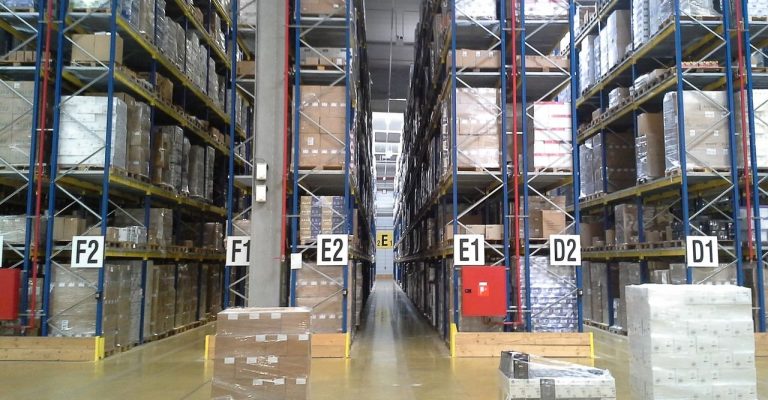VA or NVA: Inventory
At first blush, it may seem odd to consider inventory as Lean waste, or Non-Value Add (NVA). Inventory exists throughout the production value chain. As material moves through a production line, it is transformed as it is combined, assembled, modified, inspected, and tested.
Incoming material resides in a warehouse awaiting use in assembly. Between assembly operations, it resides in the line as work-in-process (WIP) inventory. Once assembly and testing are completed, the finished goods may be placed in inventory (FGI) awaiting shipment to customers. In all of these locations, the inventory is counted and recorded on the Balance Sheet as an Asset, not a Liability.
So how could inventory be considered waste? (The 8 types of NVA are described here.)
At least part of the reason is that excessive inventory – raw material, WIP, and FGI – has the effect of slowing the creation of customer value in the process. Therefore, Lean Six Sigma businesses strive to minimize inventory.
Why is Inventory NVA?
Holding product as FGI in the warehouse means that the flow of cash to the business is slowed or stopped; the business wants to ship the product, then invoice and get paid for it.
One company I’m familiar with uses the term “BSR” to emphasize this; BSR stands for Build – Ship – Revenue, which is what they endeavor to do daily.
Held in FGI, the product is susceptible to depreciation in value over time. In the extreme, if customer demand goes away completely, the FGI must scrapped and written off, the ultimate NVA. So although there may be good reasons because of distribution channel requirements to hold some amount of product in FGI, the lowest level that meets those requirements is desirable.

What about work-in-process (WIP)? There may be considerations in the production process for maintaining a level of WIP ahead of certain process operations. But recall one of the tenets of a Lean Six Sigma process is single piece flow. Ideally, each unit of product moves (flows) readily from step 1 to step 2 to step 3 and so forth, in response to pull signals from downstream. Doing so minimizes the production unit cycle time from start to finish, and also exposes defects in materials or processing so that they can be corrected rapidly.
Excessive WIP can frequently result in buildup of defective product that is not detected until some downstream operation. Minimizing WIP helps preclude defect “bonepiles” and the subsequent reworking or scrapping of partially processed units.
Finally, consider incoming material held in a warehouse pending use in assembly. This is the least dollar impact inventory since no processing (transformation) has begun. However, the raw stock represents cash expended by the business for which no return can be obtained until the product is completed, sold, and shipped.
Raw material is also susceptible to depreciation over time. Materials procured for specialized product are at risk of remaining in stock for a long time if forecast demand for that product diminishes; at some point, the value drops to zero and the full purchase price must be written off, or perhaps a small percentage may be recovered by selling to a broker. Additionally, some portion of the raw material may later be found to be defective during the assembly process; it is clearly advantageous to have minimal stock of defective material.
One Product Design Change Experience
My employer, an Electronic Manufacturing Services company (EMS), won new customer business to manufacture a high-complexity system designed for small business alternative energy control. The customer (call them XYZ) had previously assembled and installed a small number of prototype systems, and was making design changes based on their “beta” users’ experience.
The EMS was expected to begin assembly of the final design system a month after contract award.
XYZ consigned their on-hand component inventory to EMS. One problem that quickly became apparent was that many consigned components that were used in XYZ’s prototypes were not used in the final system design. Furthermore, many new components needed in the final design system still needed to be procured before assembly could start.
Resolving these inventory problems required upwards of 150 hours’ work for the EMS program team and delayed the planned start of production. The quantity of excess and obsolete (E&O) inventory written off depressed XYZ’s financial results for 2 quarters.

Further, during the first year of EMS production, XYZ released 2 successive upgrades to their design, to improve product reliability and cost. Each time, the current product was replaced by the upgrade, resulting in significant E&O inventory, not just raw material stock but also partially assembled systems.
An even greater impact to XYZ was the disruption to sales, as once each design upgrade was released, demand for the previous system plummeted. XYZ saw their FGI value drop by more than half. By the time both system upgrades had been deployed, XYZ’s expected profit from the product line had been erased.
Conclusion: Addressing the 8 Lean Wastes
When doing an NVA analysis, inventory is usually the #1 or #2 culprit in a process in terms of contribution to product cost and development expense. That said, it takes considerable planning to avoid the negative effects of inventory before the problem is created. Not surprisingly, it requires even greater effort to mitigate the effects after E&O inventory has been allowed to reach a high level.
For new or upgrade product engineering, get skilled production and supply chain personnel onto the project team early enough to prevent or minimize excessive inventory buildup. For ongoing production programs, get a handle on inventory at all locations, and put processes in place to drive down inventory at all stages – raw material, WIP, and FGI.
Cutting inventory won’t make you rich, but it can certainly help keep your business from becoming poor.
Dann Gustavson, PMP®, Lean Six-Sigma Black Belt, helps Program Managers and their teams achieve superior results through high-impact program execution. Prepare, structure, and run successful programs in product engineering, manufacturing operations (including outsourcing), and cross-functional change initiatives.
Contact Dann@Lean6SigmaPM.com.
